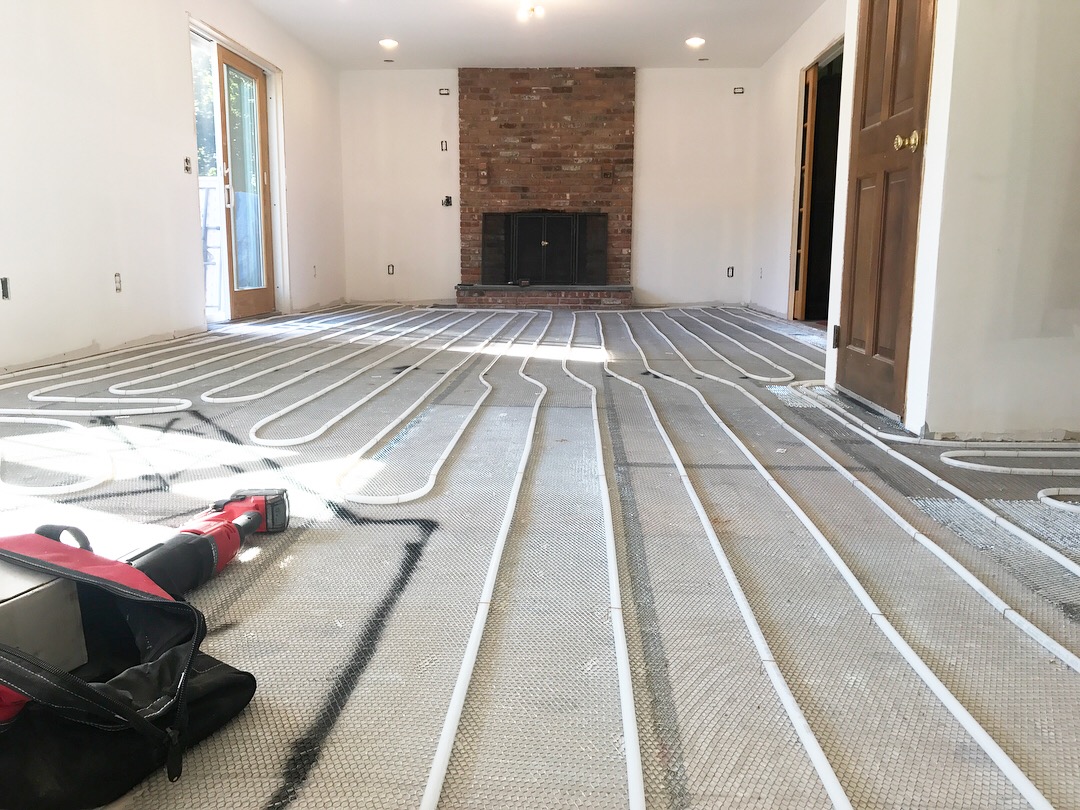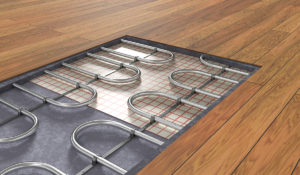
What is the best heating system for new home construction?
Building a new house gives you the chance to build the home of your dreams. However, you may not have taken the HVAC equipment for your dream home into consideration. New construction gives you a unique opportunity to install the perfect home comfort system for your lifestyle and locale. So what is the best heating system for new home construction? What are the most efficient options? There are plenty of factors involved, so as with many big decisions, the answer is “it depends.”
It depends on things that you’ve already taken into consideration while determining what your new home will be. These are likely things you have discussed with your general contractor. How important is comfort and energy efficiency? Is resale price of this home important to me? What is the upfront cost? What kind of flooring will be used throughout the home? How long and cold are the winters in my area? Do I want to install a snowmelt system?
Without diving into the many details of each system type, your choices are, for the most part, as follows: electric baseboard, forced air systems (furnace or heat pump), and hydronic heating systems (fin tube baseboard, radiators, and/or radiant in-floor systems).
As a reminder, hydronic systems use hot water from a boiler to heat your home. These systems are generally considered to the premium choice and offer the most flexibility in terms of heating options, and the ability to tie domestic hot water production into the same system.
Comfort is king
One big comfort advantage that most hydronic systems offer is that they don’t require the re-circulation of air within the home.
If you’ve lived in a home with forced air heat (like a furnace or heat pump), you are probably familiar with air movement. Air is drawn from the home through return ducts, heated by the HVAC equipment, and sent back into the living space through supply ductwork. Even though the air blowing into the living spaces is warm, it doesn’t completely heat the living space. Frequently, cold and/or warmer spots can be noticed in homes with this kind of heating system. Effectively controlling air flow from a furnace to balance the cold/warm spots in a home is very difficult and rather imprecise. Excessive noise from blowers, dampers, and vent outlet plates may also be noticeable as well. Forced air systems also dry out the indoor air and are one reason a lot of people struggle with dry skin or chapped lips in the winter. Air movement in the home can also stir up and distribute allergens, such as pet dander. As a result, the overall heating performance of your furnace or heat pump in your newly built “dream home” might be suboptimal.
Hydronic systems, on the other hand, heat the space via “warm mass”. That may be a radiator of some type, or warm floors. Because of this mass, and the fact that water is a much better conductor of energy than air, cold spots within a home are far less of a factor with a properly designed hydronic system than with forced air.
Radiators and radiant floor systems heat a space via two means: conduction and radiation. Take the example of wall-hung radiator panel. The radiator warms the air it comes in contact with through conduction. It is conducting energy (heat) to the air. This air, because it’s warmer than the surrounding air, tends to rise.
What about radiation? Radiation warms everything within the space regardless of air. Think about a full coffee mug. Pick it up and hold it in one hand. Now place your other hand several inches below the mug. Even though the air that’s being heated through conduction is rising, you can still feel heat from the bottom side of the mug. This is radiation at work. Therefore, the radiator warms the air, people, and items in the home through radiation, regardless of direction.
What about Summer?
One of the primary reasons that forced air systems are generally considered as a default choice of new constructions stems from the use of air conditioning in summer months. At first glance, it would seem to make sense to have both heating and air conditioning delivered to the interior by the same ducts. It costs less, right?
Well, the answer, once again, is “it depends”. Yes, it generally cost less to install a typical HVAC air system when building a new home, but it may end up costing more in the long run. The reason is due to efficiency; warm air rises, and cold air falls. Typically before installing a forced air system, a decision is made in the early going to favor either heating or air conditioning with the installation of the air vent outlets. They are either in the floor (favoring heat) or in the ceiling (favoring A/C). In all areas with moderate to severe winters, the vents will be in the floor (because heat rises!). During summer months, the air conditioning system will use the same floor vent outlets to pump cool air into the living space. It will depend on the system fan to get the cool air all the way up to the top of the living spaces in order to provide comfort. That means long and frequent cycle times, higher cooling bills, and added strain on equipment.
If you want air conditioning to compliment a hydronic heating system, the output vents will be located in the ceiling, not the floor. The cool air will be dispersed more evenly and will naturally disperse into the living space (because cold air falls!). This should lead to shorter cycle times, lower cooling bills, and less strain on equipment.
Types of hydronic systems
One of the things that make hydronic heating systems so desirable are the bounty of options available. Below is a brief outline of the different system types. Keep in mind that there is almost no limit to the size of a hydronic system, or the fact that these items can be mixed and matched within the same home.
- Fin Tube Baseboard
Copper fin-tube radiators (commonly called baseboard radiators) are probably the most common application of residential hydronic heat. They’re cost effective, easy to install, and leave nothing to be desired when it comes to comfort.
- Cast Iron Radiators
When cast iron radiators come up in conversation, most people immediately think of the old, standing radiators typical in older homes. These units can also be used in new construction, especially when the owner is looking for a vintage look. These tried-and-true radiators last almost indefinitely, offer unmatched heat retention and pair very well with modern boiler technology. Cast iron radiators are also available in a baseboard style. A cast iron baseboard system is highly effective and is virtually silent during operation. Either way, cast iron radiation provides a very stately look.
- Panel Radiators
Panel radiators come in a wide variety of sizes, shapes, and applications. They are typically hung on a wall, and look very modern. Panel radiators are often used in Europe, or when an architect wants to get creative with the heating system. For example, panel radiators can serve as coat racks and towel holders.
- In-Floor Radiant
When it comes to ultimate comfort and efficiency, an in-floor, or “radiant heat” system, should be highly considered! In-floor heat consists of hydronic tubing installed below the flooring. This can be in a concrete slab, in a track system, or stapled to the underside of the subfloor from below. When properly designed and installed, radiant can work with any floor covering material, though tile and concrete lend themselves best to this type of installation. Because of the labor involved, in-floor systems are generally one of the more expensive applications of hydronic heat, but the uniform heat distribution also makes it the most efficient. Plus, imagine how wonderful it would be to walk around your house in the winter with no socks on!
- Hydro Air
Hydro air is a hybrid hot water/forced air system that includes a hot water coil inside ductwork. It works almost identically to a furnace, though the heat is provided via a boiler. This system shines in applications where more than one type of hydronic heat is desired (for example, radiant in-floor downstairs and forced air upstairs), and when the homeowner wants to use a boiler to provide domestic hot water. See below.
This is not a type of hydronic heat. Rather, it’s an optional add-on to any hydronic heating system. An indirect-fired water
- Outdoor Radiant Heating
In addition to meeting your indoor heating needs, outdoor radiant heating systems can be a very helpful addition to your overall HVAC design. For instance, for those who live in areas with a good amount of snowfall or ice, installing a snowmelt radiant heating system for melting snow and ice on the sidewalks and driveway can make you home much safer.
Simply put, hydronic systems are comfortable, flexible, and long lasting. Furthermore, since radiant heating systems are extremely energy efficient, they will save households hundreds of dollars a year on home heating bills.



No Comments